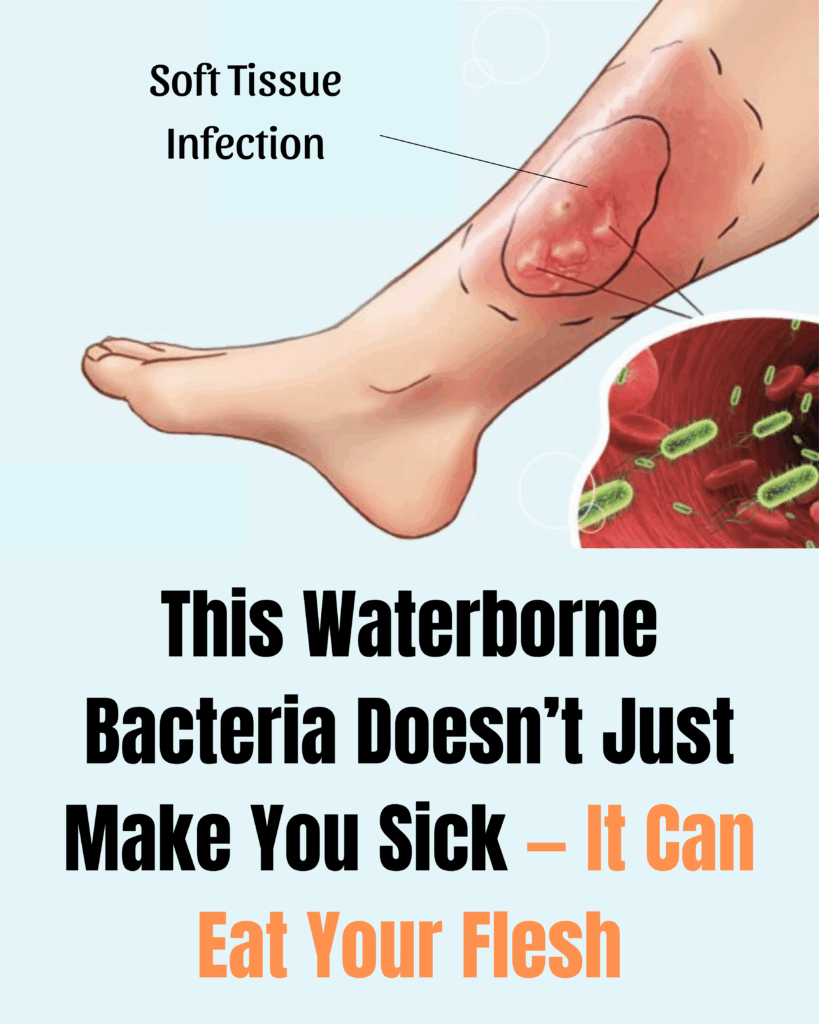Introduction
Spending long hours around water may seem harmless — or even healthy. For many fishermen, farmers, sanitation workers, and residents of river regions, daily contact with water is simply part of life. But few people realize that beneath the surface of calm rivers, lakes, or even floodwaters, there may be a hidden danger: a fast-moving, life-threatening bacterial infection called necrotizing soft tissue infection — sometimes triggered by a waterborne bacterium known as Aeromonas hydrophila.
This article explores the connection between water exposure and necrotizing soft tissue infections (NSTIs), particularly in vulnerable individuals. We’ll break down the causes, symptoms, and treatments, and explain why recognizing the signs early can save lives.
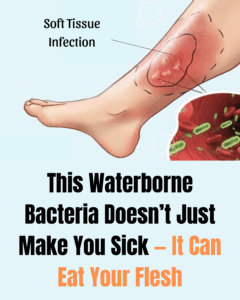
1. What Is a Soft Tissue Infection?
Soft tissue infections occur when bacteria invade the skin and underlying tissues, leading to inflammation. The affected area typically becomes red, swollen, warm, and painful. While some infections remain localized and mild, others can progress rapidly, damaging deeper structures like muscles and fat. In severe cases, the infection may lead to tissue death (necrosis), sepsis, or even death.
Those most at risk include people with underlying health conditions such as:
- Diabetes
- Gout
- Immunosuppression (e.g., from medication or illness)
- Chronic liver or kidney disease
These individuals often have reduced immune defense and poor wound healing, creating an ideal environment for aggressive infections to develop.
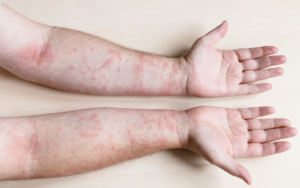
2. Common Bacteria Behind Soft Tissue Infections
The usual suspects are Staphylococcus aureus and Streptococcus pyogenes — bacteria that naturally live on the skin but can enter the body through minor cuts, insect bites, or abrasions. Once inside, they can trigger localized or widespread infection.
But in certain cases, especially among those exposed to natural water sources, another dangerous culprit may be involved: Aeromonas hydrophila.
3. The Silent Threat in Water: Aeromonas hydrophila
Aeromonas species are Gram-negative, rod-shaped, motile bacteria found widely in freshwater, brackish water, and even treated wastewater. While they usually don’t harm healthy individuals, they can cause serious infections in vulnerable people — especially when bacteria enter through skin wounds.
Aeromonas hydrophila can cause:
- Gastroenteritis (diarrhea)
- Bloodstream infections
- Rapidly progressing soft tissue infections (NSTIs), including necrotizing fasciitis
These infections are known for their explosive progression. Within just hours, a minor wound can transform into a site of severe infection with tissue destruction.
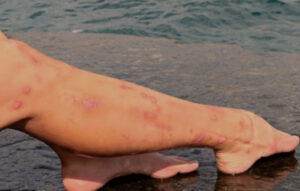
4. Signs and Symptoms of a Soft Tissue Infection Caused by Aeromonas
Recognizing the warning signs early is critical. Key symptoms include:
- High fever, chills, or feeling feverish
- Localized pain that seems unusually intense for the appearance of the wound
- Redness and swelling at the site of injury
- Formation of clear fluid-filled blisters (bullae)
- Rapid discoloration of the skin to a dark or black hue (a sign of necrosis)
- Low blood pressure, signs of kidney failure, and shock in advanced stages
Notably, Aeromonas-related infections progress much faster than typical bacterial skin infections. What starts as minor swelling can escalate to life-threatening tissue destruction within a single day.
5. Who Is Most at Risk?
People who live or work in water-rich environments are particularly vulnerable, especially if they suffer from any chronic illness. High-risk groups include:
- Fishermen
- Rice farmers
- Sanitation workers
- People living in flood-prone areas
- Individuals with diabetes or weakened immune systems
For these populations, even a small wound should be taken seriously, particularly if symptoms worsen quickly.
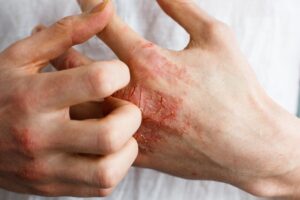
6. Treatment Options: Act Fast or Risk Losing More Than a Limb
Aeromonas infections are challenging due to their speed of progression and resistance to common antibiotics like ampicillin and penicillin. However, they typically respond to:
- Second and third-generation cephalosporins
- Fluoroquinolones
- Carbapenems
- Chloramphenicol
- Trimethoprim-sulfamethoxazole (TMP-SMX)
These antibiotics are available in Vietnam and most countries, but timing is everything.
Important Warning: Self-medicating or delaying treatment could be fatal. Anyone experiencing rapidly worsening skin symptoms after water exposure must seek urgent medical attention. Intravenous antibiotics, wound debridement (surgical removal of dead tissue), and even intensive care may be necessary.
7. Conclusion: Prevention and Awareness Save Lives
Soft tissue infections can happen to anyone, but when waterborne bacteria like Aeromonas hydrophila are involved, speed is key. Preventive measures such as:
- Wearing protective gear (e.g., gloves, boots)
- Cleaning even minor wounds thoroughly
- Avoiding water exposure if you have open cuts
- Seeking medical care immediately if symptoms appear
…can make the difference between recovery and catastrophe.
So next time you wade through water for work or leisure, remember: it’s not just what you see in the water — it’s what you don’t see that might hurt you.

